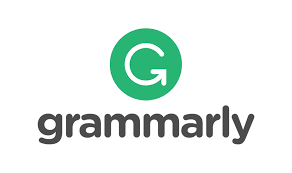The Grammatical Errors in Translating Indonesian into English of the English Study Program Students
DOI:
https://doi.org/10.57176/jn.v4i1.118Keywords:
grammatical errors, omission, mis-ordering, mis-informationAbstract
Penelitian ini dilakukan untuk menjawab pertanyaan-pertanyaan berikut: (1) Apa saja kesalahan yang paling sering dilakukan oleh mahasiswa Program Studi Bahasa Inggris dalam menerjemahkan teks bahasa Indonesia ke dalam bahasa Inggris? (2) Bagaimana tingkat kompetensi mahasiswa dalam menerjemahkan teks bahasa Indonesia ke dalam bahasa Inggris? Berdasarkan pernyataan masalah yang dikemukakan di atas, maka tujuan dari penelitian ini adalah sebagai berikut: (1) Mengidentifikasi kesalahan-kesalahan yang paling sering dilakukan oleh mahasiswa Program Studi Bahasa Inggris dalam menerjemahkan teks bahasa Indonesia ke dalam bahasa Inggris, dan (2) Mendeskripsikan tingkat kompetensi mahasiswa dalam menerjemahkan teks bahasa Indonesia ke dalam bahasa Inggris. Subjek penelitian ini adalah 20 orang mahasiswa. Dalam pengumpulan data, penulis menggunakan metode deskriptif. Metode ini bertujuan untuk mendeskripsikan kesalahan-kesalahan yang dilakukan oleh siswa. Penulis memberikan sebuah teks bacaan berbahasa Indonesia kepada siswa dan siswa menerjemahkannya ke dalam bahasa Inggris. Hasil dari penelitian ini adalah: (1) Jenis kesalahan tata bahasa dalam menerjemahkan teks bahasa Indonesia ke dalam bahasa Inggris yang dibuat oleh mahasiswa Program Studi Bahasa Inggris berdasarkan penghilangan, penambahan, kesalahan urutan dan kesalahan pembentukan. Kesalahan tata bahasa yang paling banyak ditemukan dalam menerjemahkan teks bahasa Indonesia ke dalam bahasa Inggris yang dibuat oleh mahasiswa adalah penghilangan sebanyak 98 kalimat. (2) Tingkat kompetensi, berada pada tingkat kurang.
_________________________________________________________________________________
The study aimed to address the following research questions: (1) What are the most common errors made by students of the English Study Program when translating Indonesian texts into English? (2) What is the level of competence of these students in translating Indonesian texts into English? Based on these questions, the objectives of the study were: (1) To identify the most common errors made by English Study Program students in translating Indonesian texts into English, and (2) To describe the students’ levels of competence in translating Indonesian texts into English. The subjects of this study were 20 students. A qualitative method was used for data collection, focusing on describing the errors made by the students. The students were given Indonesian texts to translate into English. The results of the study are as follows: (1) Types of grammatical errors in translating Indonesian texts into English, made by the students, included omission, addition, mis-ordering, and mis-formation. The most common grammatical error was omission, with 98 sentences exhibiting this issue. (2) The overall level of competence among the students was assessed as poor.
References
Arikunto, S. (2013). Prosedur penelitian: Suatu pendekatan praktik. Rineka Cipta.
Ary, D., & Jacobs, L. (1979). Introduction to research in education. Holt, Rinehart and Winston.
Bassnett, S. (2002). Translation studies (3rd ed.). Routledge.
Brown, H. D. (2007). Principles of language learning and teaching (5th ed.). Pearson Education.
Catford, J. C. (1965). A linguistic theory of translation. Oxford University Press.
Chomsky, N. (1965). Aspects of the theory of syntax. MIT Press.
Corder, S. P. (1967). The significance of learners' errors. International Review of Applied Linguistics, 5(4), 161-170.
Crystal, D. (2003). English as a global language (2nd ed.). Cambridge University Press.
Creswell, J. W. (2014). Research design: Qualitative, quantitative, and mixed methods approaches (4th ed.). SAGE Publications.
Duff, A. (1989). Translation: Resource books for teachers. Oxford University Press.
Dulay, H., & Burt, M. K. (1965). Language two. Oxford University Press.
Ellis, R. (2008). The study of second language acquisition (2nd ed.). Oxford University Press.
Gass, S. M. (2013). Second language acquisition: An introductory course (3rd ed.). Routledge.
Gass, S. M., & Selinker, L. (2008). Second language acquisition: An introductory course (3rd ed.). Routledge.
Harper, C. A., & de Jong, E. J. (2004). Understanding English language learners: A guide for teachers. Heinemann.
Hedge, T. (2000). Teaching and learning in the language classroom. Oxford University Press.
Hulstijn, J. H. (2003). Connecting theories of language acquisition and language processing. In C. J.
Doughty & M. H. Long (Eds.), The handbook of second language acquisition (pp. 711-736). Blackwell.
James, C. (1998). Errors in language learning and use: Exploring error analysis. Longman.
Johnson, K. (2013). Language teaching and skills development. Routledge.
Kleinmann, H. H. (1977). Avoidance behavior in adult second language acquisition. Language Learning, 27(1), 93-107.
Kramsch, C. (1998). Language and culture. Oxford University Press.
Larson, M. L. (1984). Meaning-based translation: A guide to cross-language equivalence. University Press of America.
Martaya, W. (1988). Seni menerjemahkan. Kanisius.
Molina, L., & Albir, A. H. (2002). Translation techniques revisited: A dynamic and functionalist approach. META: Translator’s Journal, 47(2), 498-512.
Newmark, P. (1988). A textbook of translation. Prentice Hall.
Nida, E. A. (1964). Towards a science of translating. E. J. Brill.
Nida, E. A., & Taber, C. R. (1982). The theory and practice of translation. E. J. Brill.
Nida, E. A. (2001). Language and culture: Contexts in translation. Foreign Language Education Press.
Pienemann, M. (1998). Language processing and second language development: Processability theory. John Benjamins Publishing.
Retnawati, H. (2014). Teori respon butir dan penerapannya. Nuha Medika.
Schmitt, N. (2010). Researching vocabulary: A vocabulary research manual. Palgrave Macmillan.
Selinker, L. (1972). Interlanguage. International Review of Applied Linguistics, 10(3), 209-231.
Shaw, H. (1978). Language arts and disciplines. McGraw-Hill.
Downloads
Published
How to Cite
Issue
Section
License
Copyright (c) 2024 Rudolof Jibrael Isu, Ni Putu Juliani Lestari Dewi

This work is licensed under a Creative Commons Attribution-ShareAlike 4.0 International License.
You are free to:
- Share — copy and redistribute the material in any medium or format for any purpose, even commercially.
- Adapt — remix, transform, and build upon the material for any purpose, even commercially.
- The licensor cannot revoke these freedoms as long as you follow the license terms.
Under the following terms:
- Attribution — You must give appropriate credit , provide a link to the license, and indicate if changes were made . You may do so in any reasonable manner, but not in any way that suggests the licensor endorses you or your use.
- ShareAlike — If you remix, transform, or build upon the material, you must distribute your contributions under the same license as the original.
- No additional restrictions — You may not apply legal terms or technological measures that legally restrict others from doing anything the license permits.
Notices:
You do not have to comply with the license for elements of the material in the public domain or where your use is permitted by an applicable exception or limitation .
No warranties are given. The license may not give you all of the permissions necessary for your intended use. For example, other rights such as publicity, privacy, or moral rights may limit how you use the material.
















